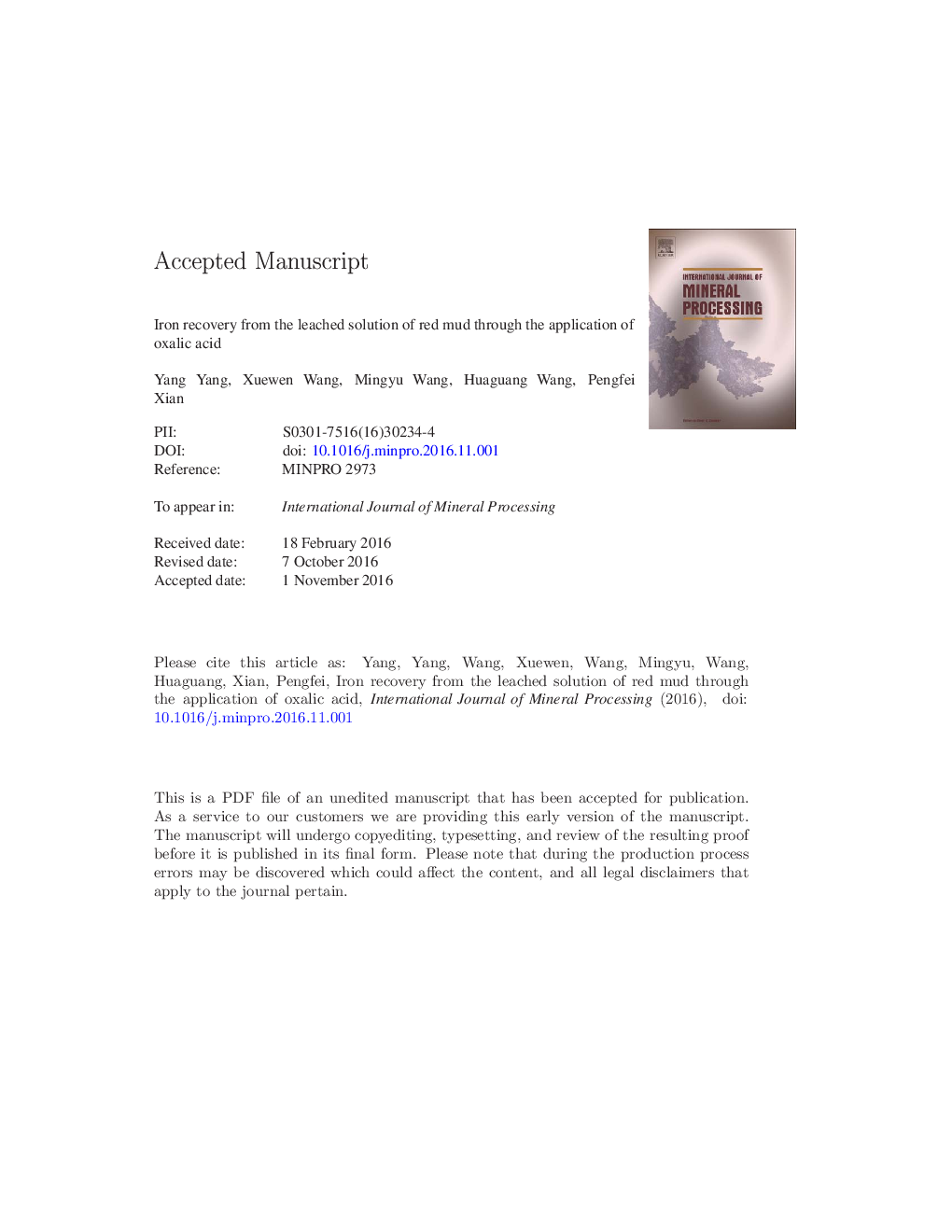| Article ID | Journal | Published Year | Pages | File Type |
|---|---|---|---|---|
| 4907180 | International Journal of Mineral Processing | 2016 | 32 Pages |
Abstract
The recovery of iron from the leached solution of red mud with oxalic acid was studied. It was found that the iron in the Fe(C2O4)33 â formed in the leached solution of red mud with oxalic acid can be effectively separated and recovered by co-precipitation, selective dissolution and re-precipitation. The iron in the leached solution was first precipitated with oxalic acid to form the precipitate containing CaC2O4·2H2O and Fe(OH)3 by adjusting the pH to about 3.5 with CaCO3. Then the Fe(OH)3 was selectively dissolved from the precipitate in the solution containing 1 mol/L HCl and 200 g/L CaCl2 with L/S ratio 4:1 mL/g at room temperature. After filtration, the iron was re-precipitated from the dissolved solution by adjusting the pH to 3.0-4.0 with CaCO3 at 80 °C under stirring. The product of Fe2O3 with the purity 98.44% was obtained by adjusting the dissolved solution pH to 3.52 and filtering the precipitate from it, and then calcining the cake at 750 °C for 3 h. By adding concentrated hydrochloric acid into the filtrate to adjust its acidity to 1 mol/L HCl, a part of CaCl2 was crystallized from it, and the saturated solution of HCl-CaCl2 was obtained, which was reused in the selective dissolution. The CaC2O4·2H2O remained in the dissolved residue was completely changed into CaSO4·2H2O and H2C2O4 in 3 mol/L H2SO4 with L/S ratio 5:1 mL/g at 60 °C stirring for 20 min. By filtering the supernatant immediately, the product of CaSO4·2H2O with the purity 99.31% was obtained after washing the cake with dilute sulfuric acid and distilled water, and then the crystal of H2C2O4·2H2O was formed by cooling the filtrate at room temperature.
Related Topics
Physical Sciences and Engineering
Chemical Engineering
Chemical Engineering (General)
Authors
Yang Yang, Xuewen Wang, Mingyu Wang, Huaguang Wang, Pengfei Xian,
